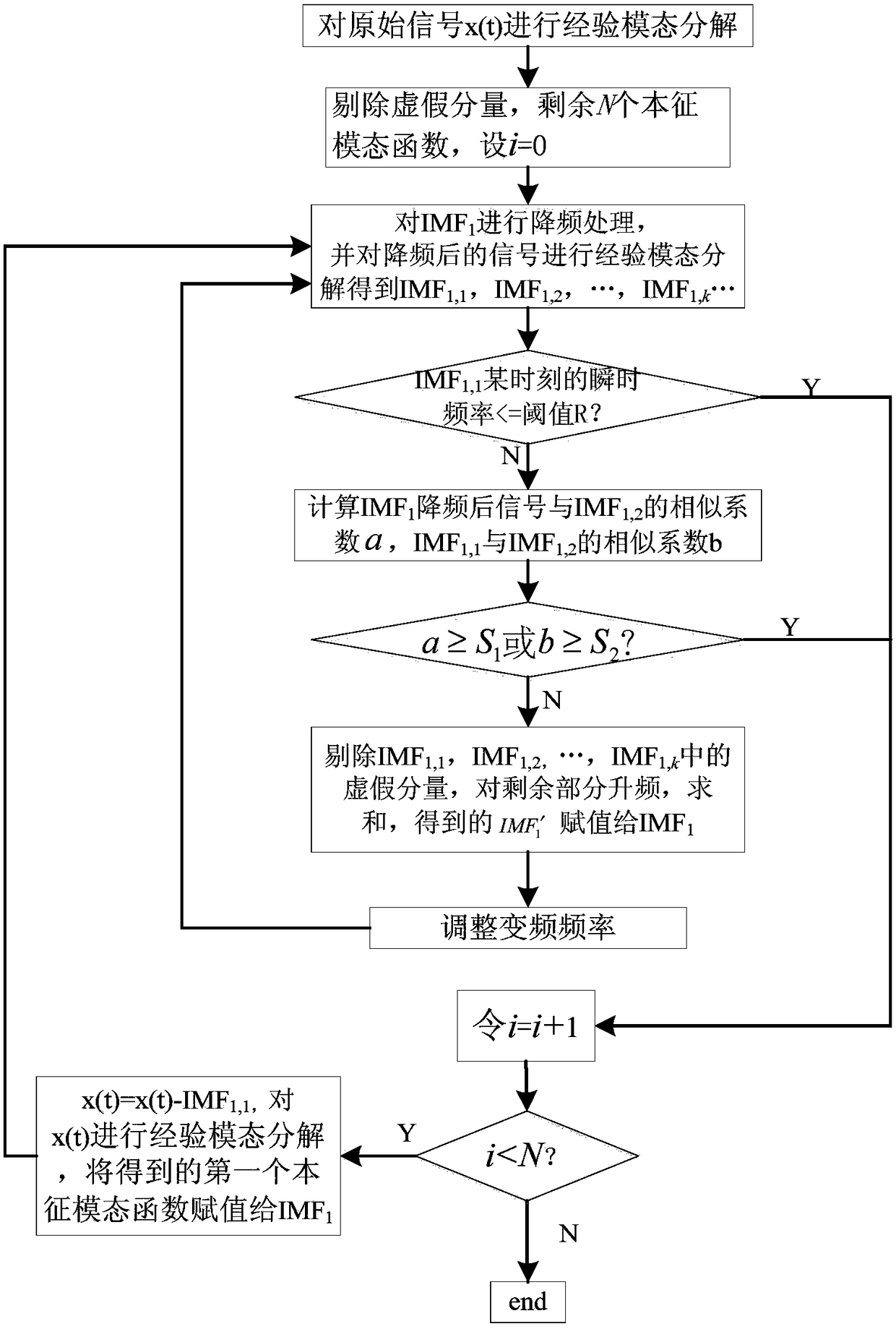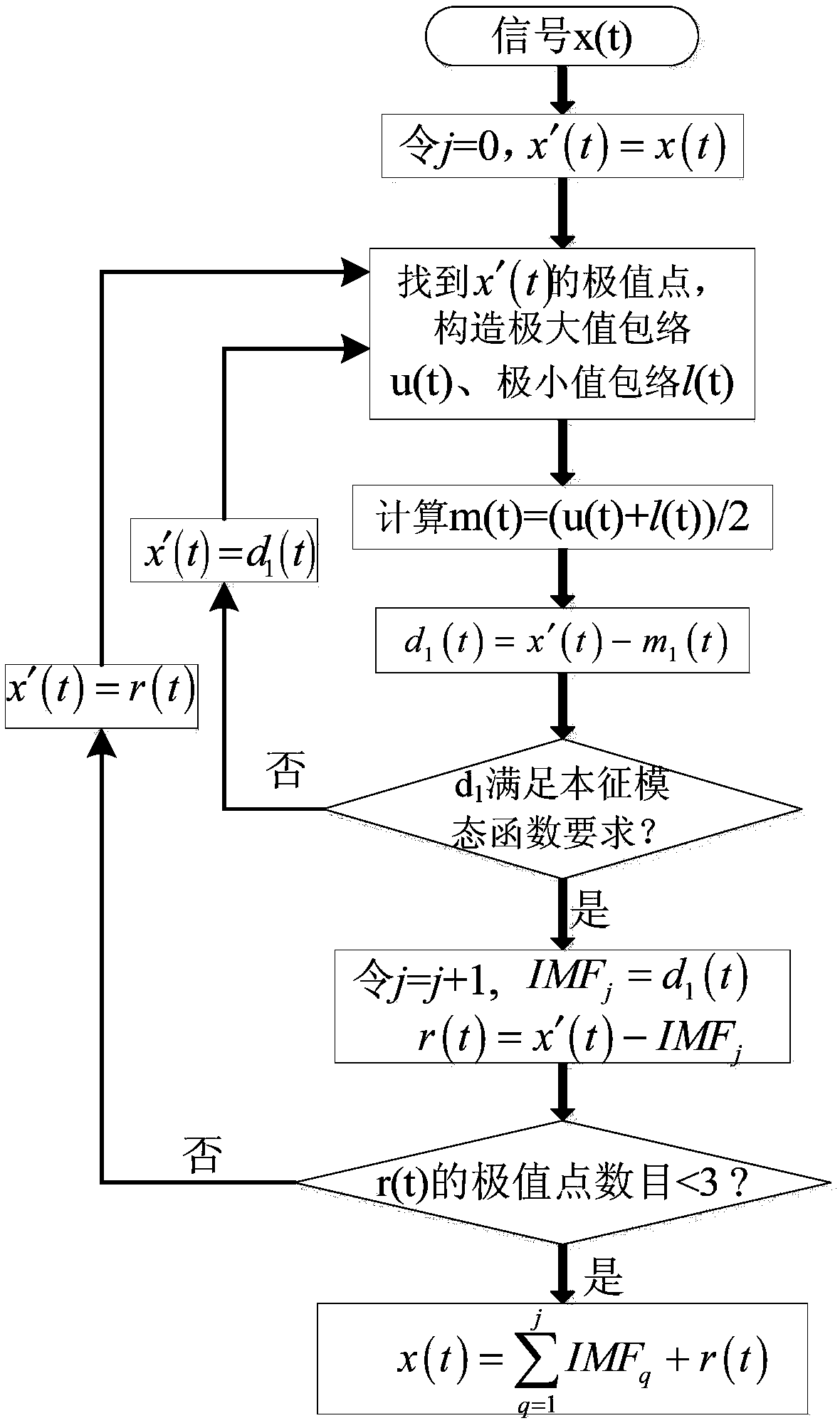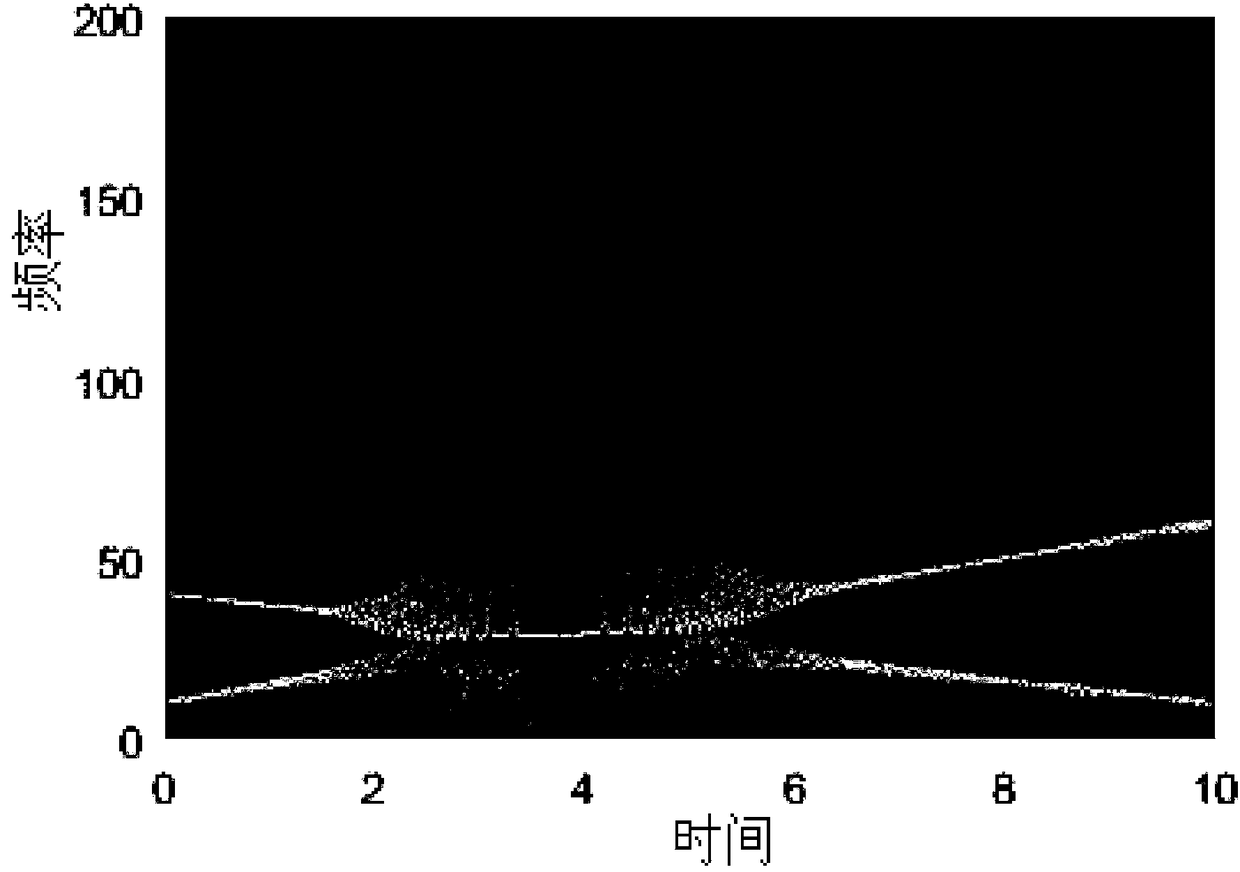Method for acquiring time-frequency distribution based on self-filtering frequency conversion experience modal decomposition
An empirical mode decomposition and time-frequency distribution technology, which is applied in the field of signal processing, can solve the problem of low accuracy of time-frequency distribution detection signal parameters, and achieve the effect of suppressing mode aliasing, small error and improved accuracy
- Summary
- Abstract
- Description
- Claims
- Application Information
AI Technical Summary
Problems solved by technology
Method used
Image
Examples
specific Embodiment approach 1
[0020] Specific embodiment one: combination figure 1 To explain this embodiment, the method for obtaining time-frequency distribution based on self-filtering and variable frequency empirical modal decomposition provided in this embodiment specifically includes the following steps:
[0021] Step 1: Perform empirical mode decomposition on the original signal x(t) to obtain several eigenmode functions;
[0022] Among them, each eigenmode function obtained after empirical mode decomposition is called the component of the signal before decomposition;
[0023] Step 2: Calculate the similarity coefficients between each eigenmode function and x(t), remove the false components according to the calculated similarity coefficients, and obtain the remaining N eigenmode functions IMF 1 ,IMF 2 ,...,IMF N , N≥1; set the variable i=0;
[0024] Step three, use Hilbert transform to IMF 1 Perform frequency reduction processing, and perform empirical mode decomposition on the frequency-reduced signal to ob...
specific Embodiment approach 2
[0031] Specific embodiment two: this embodiment is different from specific embodiment one in that the threshold S in step five is 1 Is 0.05, S 2 Is 0.001.
[0032] The other steps and parameters are the same as in the first embodiment.
specific Embodiment approach 3
[0033] Specific implementation manner three: such as figure 2 As shown, the difference between this embodiment and the first or second embodiment is that the specific process of performing empirical mode decomposition on the signal x(t) includes:
[0034] (1) Set the intermediate variable j=0, and set x′(t)=x(t);
[0035] (2) Find the maximum value and minimum value of the signal x′(t), and respectively fit the maximum value point and the minimum value point, and determine the maximum value envelope u( t) and the minimum envelope l(t) to obtain all the extreme points between the maximum envelope u(t) and the minimum envelope l(t);
[0036] (3) Use formula (1) to calculate the average value of the maximum value envelope u(t) and the minimum value envelope l(t), denoted as m 1 (t):
[0037]
[0038] After that, subtract the resulting m from the signal x′(t) 1 (t), and denoted as d 1 (t), as in formula (2):
[0039] d 1 (t)=x′(t)-m 1 (t) (2)
[0040] If d 1 (t) To meet the requirements of...
PUM
 Login to View More
Login to View More Abstract
Description
Claims
Application Information
 Login to View More
Login to View More - R&D
- Intellectual Property
- Life Sciences
- Materials
- Tech Scout
- Unparalleled Data Quality
- Higher Quality Content
- 60% Fewer Hallucinations
Browse by: Latest US Patents, China's latest patents, Technical Efficacy Thesaurus, Application Domain, Technology Topic, Popular Technical Reports.
© 2025 PatSnap. All rights reserved.Legal|Privacy policy|Modern Slavery Act Transparency Statement|Sitemap|About US| Contact US: help@patsnap.com



